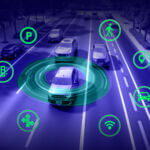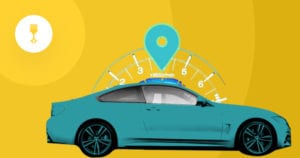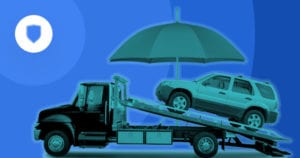
From the advent of the Model-T to the promise of self-driving cars, the automotive industry has changed drastically in the past century. As technology continues to become more sophisticated and consumers expect vehicle digitalization, there’s mounting pressure to transform from mechanical-centric to software-defined vehicles. To stay relevant, manufacturers and suppliers will have to implement innovative, software-based solutions.
Internet of Vehicles: Connected, Autonomous, Shared, and Electric Mobility Services
How exactly companies will approach the delicate balance between quick adoption and successful execution remains cloudy as several factors will affect the outcome, including regulatory software development and social acceptance of several emerging trends. But one thing is certain: the automotive industry is facing another monumental wave of change. Looking ahead to 2030, connected, autonomous, shared and electric (C.A.S.E.) mobility services will dominate the automotive market, offering quicker, safer, more efficient, more cost-effective and more customized transportation opportunities.
It’s predicted that around 98 percent of new cars will be connected in the next year, enhancing the driving experience with driver-assistance, real-time vehicle information, and entertainment services. In the next decade, the industry will have no choice but to implement a customer-centric business model, leading companies to take a software-first approach by enabling vehicle-as-a-software platforms.
The applications for entirely connected vehicles are vast, and the connected car of the future will be able to efficiently execute services for usage-based insurance (UBI), driver wellbeing monitoring, predictive maintenance and so much more. Soon, advances in connectivity, like 5G, and the proliferation of cloud edge capabilities will enable an easy and seamless way of using the vehicle as an integrated part of cloud-based services.
When autonomous vehicles become mainstream, taxi drivers, truck drivers, and transportation services will be significantly impacted. Instead of overseeing a single vehicle, drivers may transform into owners and operators of autonomous fleets. For example, a taxi driver could lease or buy several robotaxis and would need to be capable of using a software-defined vehicle to successfully run their business.
Even without autonomous vehicles in the mainstream, consumers are already shifting from a private model toward shared mobility as they look for more sustainable, cost-effective and convenient transportation options. Taking connectivity and software-defined vehicles into account, service companies can more easily integrate and aggregate shared car fleets so customers can plan, book, and pay for their journeys entirely on their mobile device.
Cloud and Edge Computing
The answer to automotive’s long-standing stall in innovation has, of course, been to adopt a software-defined vehicle. Today, designing, building and managing new types of business solutions and experiences for connected vehicles is largely enabled by modern cloud technologies.
Cloud has become a huge part of everyday life. From the virtual cloud, where people can access photos and music via their smart device, to IoT, where people can connect to a range of devices, mobility companies now have the tools to create connected services and, by extension, a new way of running businesses. When looking at the software-defined vehicle and the many services that can stem from it, such as shared mobility, it’s critical to look at the entire picture.
So far, the cloud has already played an integral role in transforming vehicles from stand-alone, transportation-centric machines to sophisticated, connected vehicles. However, given the massive amount of data that connected vehicles produce, the cloud-centric approach is becoming an inefficient method to support connectivity channel stability (presence, bandwidth), and instantaneously process, analyze data, and execute services for connected vehicles.
The caveat with cloud for connected services in automotive is that, by exclusively using the cloud-centric approach, there’s a greater likelihood of outages caused by the connectivity between vehicle and cloud. For the automotive industry, connectivity absence or interruption impacts the entire connected service functionality.
Today, vehicles produce approximately 25GB of data per hour. The data is used by onboard systems to operate the vehicle, to interact with drivers and passengers and, most importantly, to help operate safety systems. As connectivity becomes more ubiquitous and vehicles produce more data, companies will need to consider an alternative approach. The next great leap for automotive is edge computing, which enables data processing closer to its origin, as well as connected service business logic execution on the vehicle’s onboard computer.
For example, vehicle sensors provide the engine status. With edge computing, the sensor data wouldn’t have to go to a data center to determine whether or not something is impacting the engine’s operations. Localizing data processing and connected service business logic execution on the edge enables services to be functional even if connectivity between the vehicle and cloud is absent. Even with the advent of 5G and its edge capabilities, a comprehensive rollout will take close to a decade and is unlikely to deliver ubiquitous connectivity, especially outside metropolitan areas. When automotive manufacturers build vehicles as an edge for connected services, they can be transformed into an entirely new offering and open new revenue streams, similar to how existing cloud vendors provide computing power, storage space, and APIs to cloud-based services.
Software-Defined Vehicles
It’s time for automotive companies to think beyond their traditional service offerings; not being part of the Internet of Vehicles is no longer an option. After-market startups are creating true automotive IoT programs impacting many Applications, including breakdown assistance, car locator, advanced diagnostic alerts, auto insurance shopping, access to repair shops, job dispatching, expense creation apps and more. Given automotive’s complex development environment, it’s not currently possible to use vehicles as part of the connected-services ecosystem.
Before apps, before interfaces, before code, manufacturers must think about how the vehicle interacts with other software and platforms. The point is to open the vehicle to the shared economy, which means providing generalized access to the vehicle via software. This, in turn, enables new business concepts and capabilities that may include many types of user and business experiences.
This is why the basic thinking and architecture of a fully connected vehicle needs to be structured around connected services rather than just driver-facing applications or data aggregation. Connected services are computer programs that run invisibly for a driver or passenger. There are many connected services behind virtually every mobility business with any kind of online presence.
Connected services use data, pre-process data, handle eCommerce payments, ensure compliance with policies and laws, track advertising, deliver messages, and much more. With connected services, mobility companies can run complex software on the vehicle itself with no automotive software development expertise required.
For example, both a UBI service that tracks driving behavior and a predictive maintenance monitoring system can run purely as a service on the vehicle’s onboard computer. These services can start and run silently in the vehicle, providing useful data to other cloud systems, and executing service-specific logic on the vehicle’s onboard computer. With this approach, the vehicle effectively becomes a software platform, significantly simplifying service development, integration, and deployment. When the vehicle is software-defined, the service is always upgraded, always relevant, and always controlled by the service producer without compromising the vehicle safety and security.
Future of the Internet of Vehicles
In the age of C.A.S.E., the automotive industry needs to overcome the obstacles standing in the way of quick adoption and successful execution of innovations that will open new revenue streams and deliver more efficient, cost-effective, customized transportation opportunities.
Implementing these innovative systems in automotive will allow the industry to replicate the same approach as mobile services and application development. When the vehicle is an open software platform, this unlocks many different types of future mobility services and enables automotive companies to develop new revenue models, similar to existing cloud vendors.
Written by Alex Agizim, CTO Automotive and Embedded Systems at EPAM





 Related Podcast Episode
Related Podcast Episode




 Related Applications
Related Applications



 Latest IoT News
Latest IoT News







